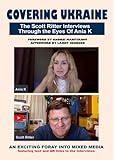The poet’s calling is to keep dimensions of horizon in
and out of sight, to move behind a lens bouncing
from rut to rut toward a focus of bleeding touch
from spine to spine: share the human zeal for going
nowhere, to discover in the ultimate note, another tangent,
Us again, la Sonora, still to invoke chase-and-recover.
But slow. We are learning, as the ancestors knew
from the neutral cosmos of their cockcrow senses
before the very first wheel-rut was pressed—
before all Earth be rutted and ransacked?—
how to journey in space in compassed place, deep and,
without leaving another rut or even footprint,
to learn not only how to journey in place or no-place,
but to idle—like perch gently fanning calm lake water,
feeling the fin-made current against my swaying
source-starved body, limbs resisting the cool push
of water in treasured place and measured time,
time permitting—or time remaining . . but again,
from any spot on a spheroid, where are true horizons?
True horizons are also internal, hallucinatory effects
from a draught of mirage—deep deep blue, obsidian cold,
breathless depths where we dare not drown—nor
will we drown even if we dare, now in the dun-dry sand,
welter and waste of our sacred first delusions.











